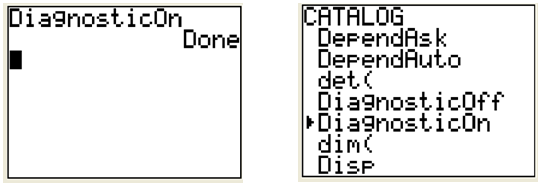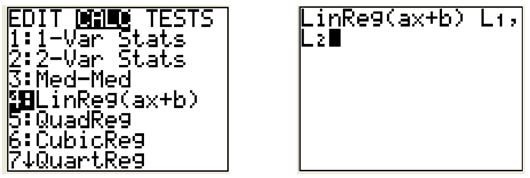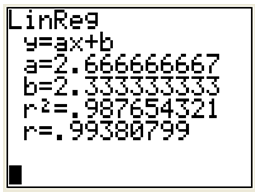Pearson's Correlation Coefficient
| Site: | Clare-Gladwin RESD |
| Course: | Michigan Algebra I |
| Book: | Pearson's Correlation Coefficient |
| Printed by: | Guest user |
| Date: | Saturday, December 20, 2025, 2:43 AM |
Description
Pearson's Correlation Coefficient
Definition
Pearson's Correlation Coefficient measures the strength of the linear relationship between two variables. It is usually signified by r and takes on values between -1.0 and 1.0. Where -1.0 is a perfect negative correlation, 0.0 is no correlation, and 1.0 is a perfect positive correlation.The coefficient also tells you if the relationship is positive or negative by whether the value of r is positive or negative. Positive correlation indicates that as the values of x increase, the values of y also increase. A negative correlation indicates that as one variable increases, the other decreases.
The formula for r-value is as follows:

Mostly calculators and computers are used to find the coefficient. It is the expectation of this course that you will understand how to use and interpret the coefficient, not calculate it using the formula.
Graphs of the Coefficient
Pearson's correlation coefficient (r) ranges from -1 to +1:


Values of the Coefficient
A correlation greater than 0.8 is generally described as strong, whereas a correlation less than 0.5 is generally described as weak. These values can vary based upon the "type" of data being examined. A study utilizing scientific data may require a stronger correlation than a study using social science data.If a correlation coefficient is found that is larger than +1 or less than - 1, there must have been a calculation error. Keep this in mind when calculating a correlation coefficient.
Online Practice
For practice in matching graphs with their corresponding r-values, select the following link. Each time you click the tab "New Plots" you will get a new set of graphs to try.Pearson's Correlations Online Practice
Interactive Activity
For an interactive showing the relationship between the value of r and a linear plot, select the following link:r-value interactive
Using a Calculator
Follow these steps to have a TI83/84 calculator compute r:Step 1. Press 2nd [CATALOG] [D]. Scroll down to Diagnostic On. Press ENTER ENTER. (Note: You need to do this step only once. After you turn the diagnostics on, the setting remains on.)


Step 3. The calculator displays the value of r, which in this case is .99380799. It also displays other information about the least squares line, which you'll learn about later.

Guided Practice
For guided practice problems on correlation coefficients, select the following link:Hotmath Guided Practice
Sources
EvoTutor, "Correlation Coefficient." http://www.evotutor.org/ Statistics/St2A.html (accessed 08/27/2010).
HotMath.com, "Practice Problems." http://hotmath.com/help/ gt/genericalg2/section_2_6.html (accessed 08/27/2010).
MathBits.com, "Correlation Coefficient." http://mathbits.com/ MathBits/TISection/Statistics2/correlation.htm (accessed 08/22/2010).
Stat Istics , "Guessing Correlations ." http://istics.net/stat/Correlations/ (accessed 9/15/2010).
University of the West of England, "Pearson Correlation Coefficients." http://hsc.uwe.ac.uk/dataanalysis/quantInfAssPear.asp (accessed 08/22/2010).
Winks, "Pearson Correlation Coefficient." http://www.texasoft.com/ winkpear.html (accessed 08/22/2010).